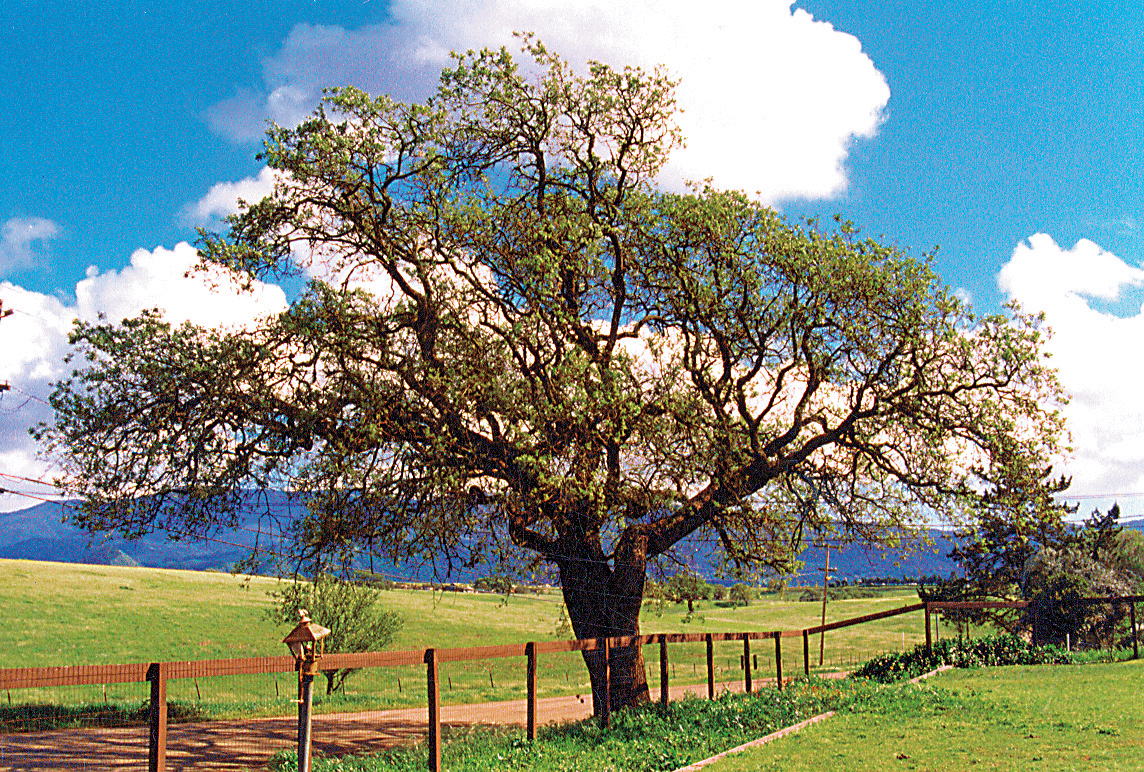Throughout history, the oak tree has managed to garner both admiration and respect. Oak was deemed sacred to Zeus of Greek mythology. The ancient Druids of Great Britain attributed magical qualities to the oak; Native Americans revered the oak’s healing properties; the Roman goddess Diana, was often pictured with a necklace of acorns as a talisman against harm.
 Although there are more than 200 species of oak trees, the one that is perhaps most loved and respected around here at Ranch & Country headquarters is the quercus lobata species, commonly called the “valley oak.” This species is endemic to California and grows in the interior valleys from Siskiyou County to San Diego County. Although there are more than 200 species of oak trees, the one that is perhaps most loved and respected around here at Ranch & Country headquarters is the quercus lobata species, commonly called the “valley oak.” This species is endemic to California and grows in the interior valleys from Siskiyou County to San Diego County.
The valley oak has a signature look with its thick ridged bark, and gnarled outstretched arms that reach to the heavens while fingering the earth. These trees typically have a mature height of 40 to 70 feet but can reach heights of 100 feet, and can live up to 600 years! The age of a valley oak can be determined by the diameter of its trunk. A 3 to 4 foot diameter trunk is 150 to 250 years old, a 6 to 8 foot diameter trunk could be 400 to 500 years old. A 10 foot diameter tree trunk is an outlier.
Unlike many evergreen oak species, the valley oak is deciduous. Each fall, the leaves turn a golden yellow, then brown, and then are gone by Winter Solstice. Naked branches etch a blackened silhouette against winter skies, a mass of twists and curls with the braun of a prize fighter and the ephemeral grace of a ballerina
Many think of the oak tree as a slow growing tree, but oaks actually grow fast when they are young. A valley oak can grow up to 20 feet in 5 years and 20 more feet in the next 5 year. Then the growth pattern slows significantly; the trunk thickens and increases its bulk; the branches open out. The tap root of a “young” valley oak (that is, 10 to 40 years old) will reach straight down to roughly 60 feet to find its water source. At that point, the root system begins to branch and spread, seeking out varied nutrient rich sources.
Like everything else, the valley oak is threatened by the many years of drought. Severe water loss greater than 30% puts them in danger of death. Thankfully, mature valley oaks are relatively drought tolerant, but the complete lack of a normal rainy season over several years threatens the valley oak along with all trees.
Some sources suggest that if the rainy season is extremely dry, manual watering could be used but only during the months of January to May. For the valley oak, the suggestion has been to water once a month, using approximately 10 gallons of water per inch of the tree’s diameter. Water slowly so that it soaks in. Allow the ground to dry thoroughly between waterings.
However, all seem to agree that there should be no watering from May to November. Valley oaks are “programmed” to endure dry summer months and water introduced at this time can cause oak root fungus that could weaken and even kill the tree. Also avoid mulching, drip lines, succulents, and other things under oak trees that tend to keep the soil moist. Oak root fungus could also be caused by an extremely wet El Nino induced rainy season.
All this being said, oak trees are hearty creatures - that’s why they’ve been around for so long. Next time you find yourself walking among the oaks, if you happen to have a tape measure handy just measure the trunk’s circumference, divide by 3.14 (pi) and multiply by 5 to get years old. You may be transported back to the days of the gold rush, or even back to colonial times. Or before… |